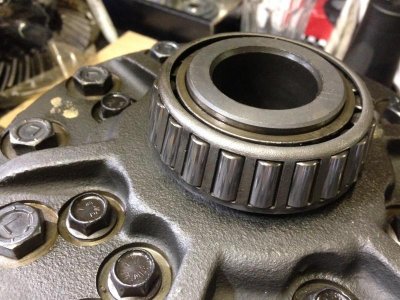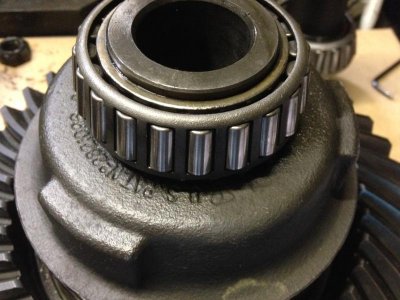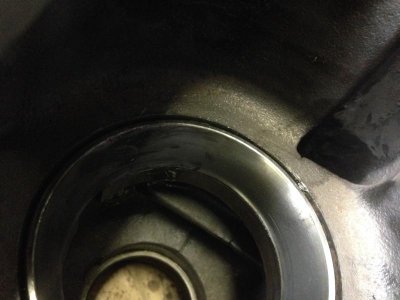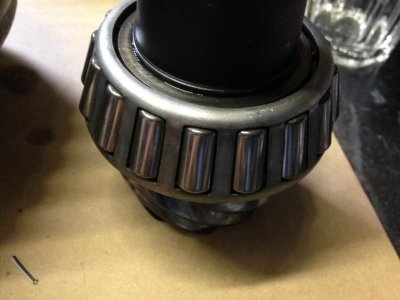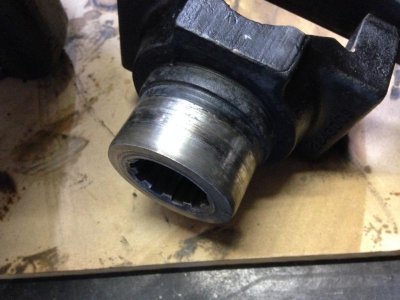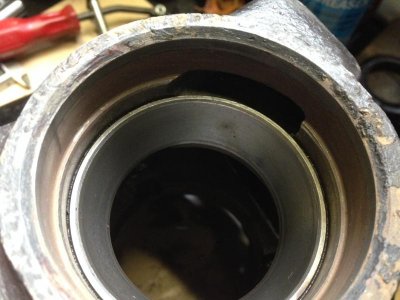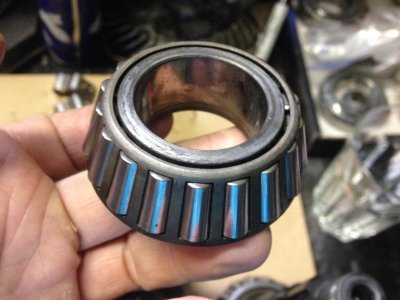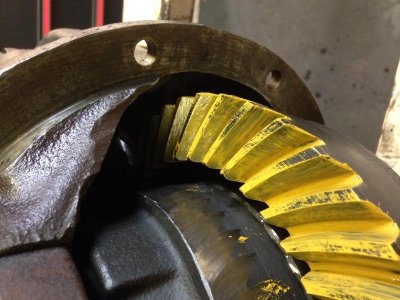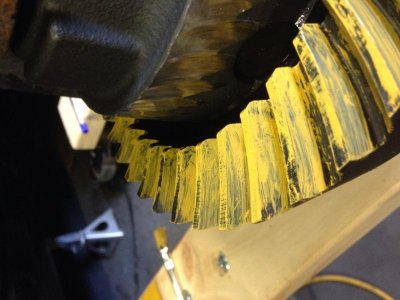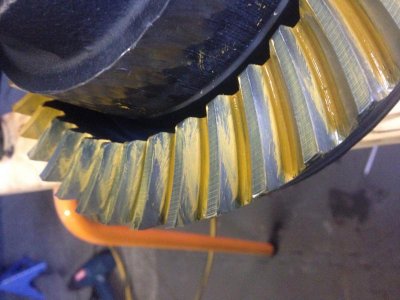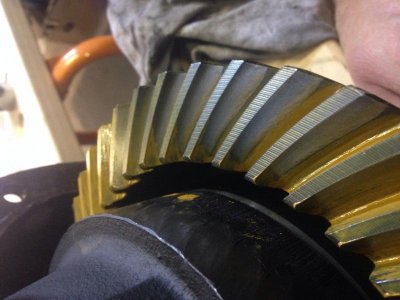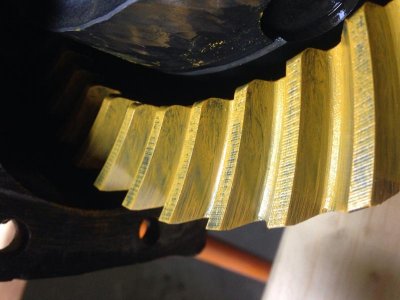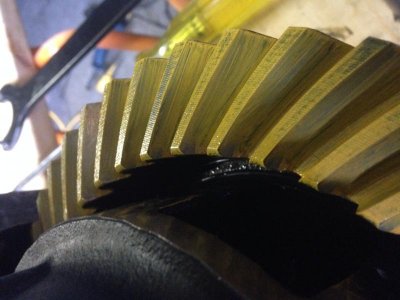Thanks sure grip, I'll check that out as soon as I finish this post.
So I have decided to continue with the old bearings. When I looked at the old and new side by side there didn't appear to be enough of a difference to swap them. Plus I'll probably look at rebuilding this again in a year or two as I've worked out I have the 4.56 gears, not great for highway!! So I might go the full hog then. Also means is I significantly stuff up here I'm only killing the old bearings as well.
So I have set up the diff twice now including adjusting the back lash, here's why. When I set the pinion in the first time I adjusted the shims to remove the end play, which was the solid spacer and the smallest shim. It seamed fine but once I'd set up the centre in it and removed the back lash there seamed to be too much play in the front smaller bearing. When hanging drive shaft side down, I could reach in and touch the front bearings (test set up so no pinion seal) and wiggle them easily.
So I have just set the whole thing up again this time with out the shim on the spacer, adjusted the backlash etc. now hanging drive shaft end down again, there is a small amount of play in that front bearing, no where near as much as previously. But when I lay it on it's side, as it would in use, there is no play in the bearings at all.
So have I now set it up correctly? Or does it need a little extra room (with the shim, looser front bearing while hanging)? Or do I need to shave the solid spacer down and have no play in the front bearing even while hanging drive shaft side down?
I'm going to have some lunch, then do finally assembled without the shim. So if some one can give me advice in the next hour, that would be perfect!
Thanks!
- - - Updated - - -
Oh, I've also sanded the flange surface where it touches the oil seal with 240 then 400, seams to have smoothed it out bar to groves. There's no sharp edges on them the grooves, I think it'll be good to go.
- - - Updated - - -
Actually I think that video may have answered it for me. I'm going to do a tooth pattern test on the current test set up. If it comes back correct then I'll blow it apart and do final assembly.

